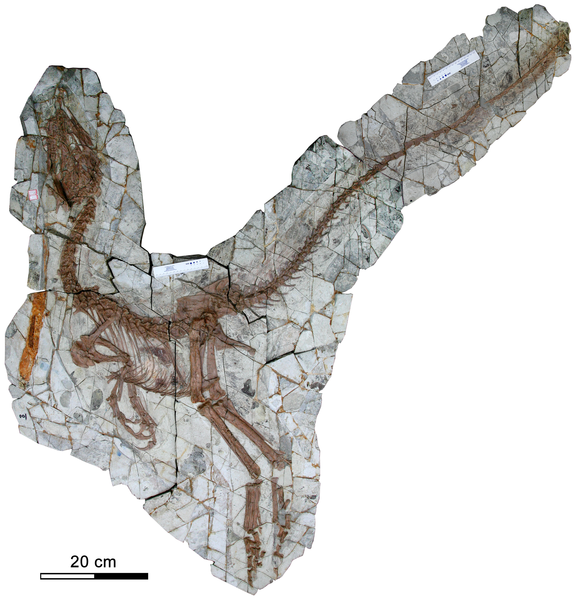Analysis of the abdominal contents of two dinosaur fossil specimens reveals new information about their hunting and eating behavior, according to a new report. They may have been stealth hunters.
The authors investigated the abdominal contents of two specimens of Sinocalliopteryx gigas, a small carnivorous dinosaur from China.
One specimen appeared to have eaten a bird-like dinosaur, a dromaeosaurid leg, and the other's abdominal cavity contained the remains of at least two primitive birds, Confuciusornis sanctus, in addition to bones from a possible ornithischian.
The researchers could not determine whether the prey had been actively hunted or scavenged, but other evidence suggests that the Sinocalliopteryx were adept stealth hunters who may have tackled prey more than a third their own size.
Holotype of Sinocalliopteryx gigas (JMP-V-05-8-01). Credit: doi:10.1371/journal.pone.0044012.g001
Citation: Xing L, Bell PR, Persons WS IV, Ji S, Miyashita T, et al. (2012) Abdominal Contents from Two Large Early Cretaceous Compsognathids (Dinosauria: Theropoda) Demonstrate Feeding on Confuciusornithids and Dromaeosaurids. PLoS ONE 7(8): e44012. doi:10.1371/journal.pone.0044012






Comments